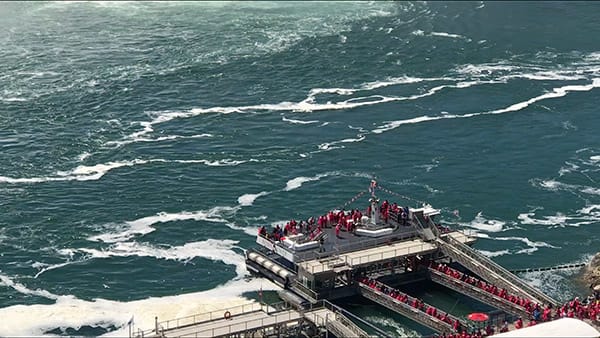Set up by Professor Lucy Orta UAL Chair of Art for the Environment – Centre for Sustainable Fashion in 2015, The Art for the Environment International Artist Residency Programme (AER) provides UAL graduates with the exceptional opportunity to apply for short residencies at one of our internationally renowned host institutions, to explore concerns that define the 21st century – biodiversity, environmental sustainability, social economy, and human rights. Through research, studio practice, critiques and mentoring the AER programme is designed to envision a world of tomorrow; to imagine and create work that challenges how we interact with the environment and each other.
Read Qiaoer Jin’s successful residency proposal:
I recently graduated from the University of Toronto’s Visual Studies and architectural design program, and currently pursuing a master degree of fine arts in UAL. I primarily work with time-based media such as video and sound installation. Through my art practice, I keep paying attention on the relationship between human being and nature/environment. My artworks reveal my concern about how human being interact with nature and impact their surrounding environment. Most of my works critic on environmental issues such as light pollution, sound pollution, air pollution and excessive usage of energy resources. Recently, I am exploring with fictional storytelling regarding the topic of post-humanism.
I had an experience of curating an exhibition with my friend as both an artist and organizer. Since I studied architecture, I am sensitive with the spatial arrangement and aware of how space will affect the audience to perceive/experience the artwork. I also took part in some group exhibitions and screenings through the submissions regarding different themes. In the formation of my works, research has a significant impact on the theme and the presentation of the subject matter.
For instance, through the creation of the video work Insomnia, I had researched how urban light affected the plants by sending false alarms of the temperature and the length of daytime. Apart from the research regarding light pollution, Jonathan Crary’s article On The Ends Of Sleep: Shadows In The Glare Of A 24/7 World also shapes my perception on this issue.
For the proposal of the residency project, I intend to keep exploring the relationship between human and nature, which is, in this case, how tourism shapes people’s conception of natural landscape. The bizarre experience of travelling to Niagara Falls with my mom in this June changed my perception of the concept of “natural attraction”. The repetitive pattern of tourists boarding and getting off the ship visually resembles the scenes in the film Metropolis (1927) – arrays of people were marching to the workplace like robots. The mechanical and repetitive movements of both human machinery in the landscape (tourist ships) as well as the lining tourists have effetely become part of the so-called natural landscape.
The presence of repeating human activities challenge the distinction between natural landscape (e.g. waterfall) and humanly constructed landscape (e.g. theme park). In a way, the tourists and the ships manufacture the landscape that we engage. In this situation, which may resemble the ideology of
zoo, “natural” attractions become a socially constructed concept as a place where people can experience the sublimeness and wildness of what they perceive as natural. Given context, through the project, I would like to explore the concept of the “alternative” nature – as artificial
nature / tamed nature.
My proposed project will compose of the video clips that I filmed in Niagara Falls and other found footages or archives. However, the work will not specifically address the problem to Niagara Falls; it is merely one of the instances of this global issue. Instead, the footage will only function as a reference to those “natural” attractions. The work will tell the story of a fictional place where the natural attraction is “artificial”. The repetition of the clips gradually reveals the “tourists” actually “work” to re-activate the dead/dying natural attractions and enjoy the view.
Giorgio Agamben’s article Difference and repetition: On Guy Debord’s film can be a significant reference through the creation of this work. Not only the tourists’ repetitive movement pattern in the clips but also the usage of the repetition and stoppage of the clips would reinforce the idea of mechanism and the concept of artificial nature. At the same time, repetition and stoppage will also be a method to express the time and space in the storytelling.
I appreciate that CFCCA provide this opportunity to my university postgrads. This will be a great chance for me to develop my work in a benign environment where I can exchange ideas with other students and receive feedbacks from various perspectives.

Tourists get on and off the boat, Qiaoer Jin
This article was originally posted on the UAL Post-Grad Community Blog, click here to read more from the UAL Postgraduate Community
Click here to see more work from Qiaoer Jin
Header image: still from Half Flame Half Brine by Qiaoer Jin, a single-channel video that consists of found footages and animations

